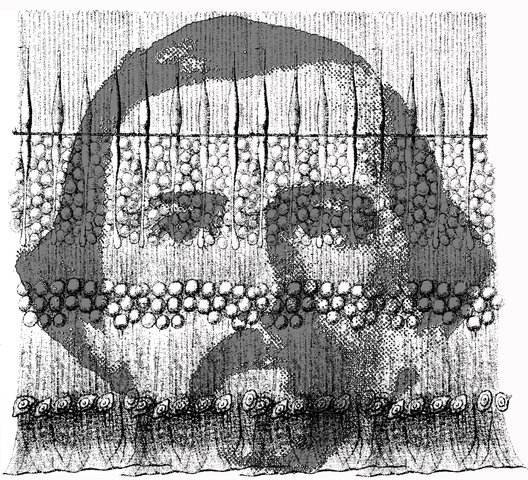Rudolph Albert von Kölliker1817–1905
When writing his Handbuch der physiologischen Optik, Helmholtz drew upon the burgeoning microscopical research that was emerging from German laboratories. The authorities on retinal structure were Kölliker and his collaborator Heinrich Müller. The figure Helmholtz used to illustrate retinal structure in the first volume of his Handbuch was from Kölliker (1854), but he changed it in the second edition of 1896 to that by Schultze, together with Schultze’s (1866) diagram of the single rod and cone. The numerical ordering of the layers in the retina was reversed, too. For Kölliker’s diagram, in which his portrait is shown, the sequence started with the rod and cone layer; for Schultze’s the number of layers was extended to ten, and the sequence terminated with the choroid. The English translation of Helmholtz confounds the two accounts; the text is taken from the first edition, but Schultze’s diagram from the second edition replaces that of Kölliker. The third German edition (and therefore the English translation) is based on Helmholtz’s first edition, and so contains this conflation. Kölliker was born in Zurich but spent most of his academic life as professor of physiology and microscopical and comparative anatomy at the university of Würzburg. He was renowned for his painstaking anatomical studies, and he added the term axon to the vocabulary of anatomy. Later in his life, when he was the elder statesman of German neuroanatomy, he met Cajal and was impressed by his staining studies and did much to awaken the scientific community to his research. Kölliker even learned Spanish so that he could read Cajal in the original language.
